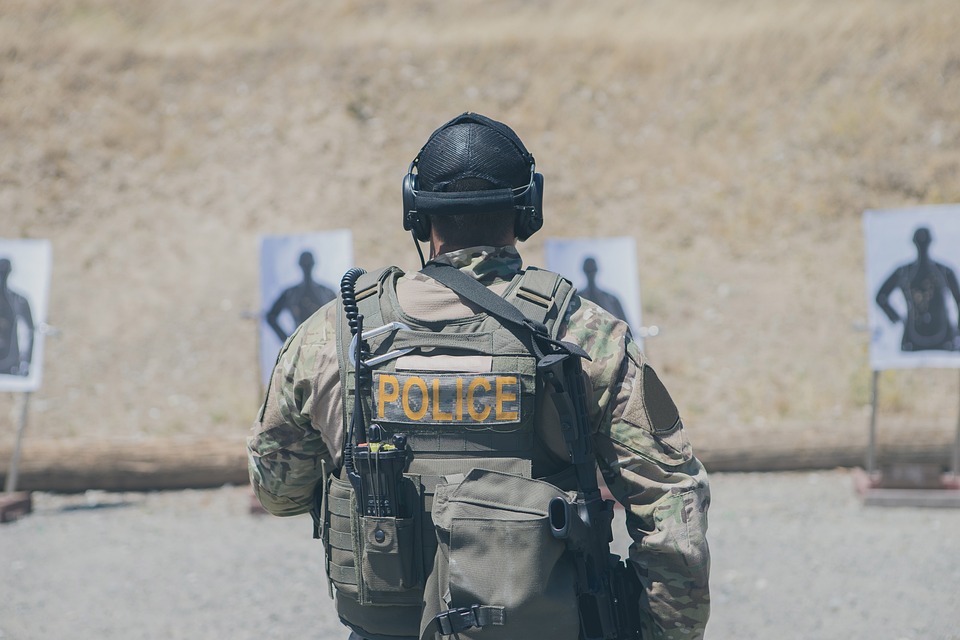
Exploring the Thrill of the Shooting Range: A Beginner’s Guide
Exploring the Thrill of the Shooting Range: A Beginner’s Guide
Have you ever been curious about the power and precision behind shooting a firearm? The shooting range provides an exhilarating experience that allows you to learn the fundamentals of marksmanship in a safe and controlled environment. Whether you are interested in self-defense, competitive shooting, or simply want to try something new, this beginner’s guide will help you navigate the exciting world of shooting ranges.
Understanding Firearm Safety
Before stepping foot onto a shooting range, it is crucial to familiarize yourself with firearm safety. This fundamental aspect ensures the well-being of yourself and those around you. Here are some essential safety tips to keep in mind:
1. Always Treat a Firearm as if it is Loaded: Regardless of whether you believe it is unloaded, never point a firearm at anything you do not intend to shoot. Treat every gun as if it is loaded to prevent accidents.
2. Keep Your Finger Off the Trigger until Ready to Shoot: Maintain proper trigger discipline by keeping your finger off the trigger until you are ready to fire. Accidental discharges can result from not following this basic rule.
3. Be Mindful of Your Muzzle Direction: Ensure that the barrel of your firearm is always pointed in a safe direction. Keep it pointed downrange and away from people, even when unloading or handling.
4. Know Your Target and What’s Behind It: Before pulling the trigger, understand what lies beyond your intended target. This knowledge prevents accidents from stray bullets.
Choosing the Right Shooting Range
Shooting ranges can vary in terms of services, amenities, and the type of shooting they accommodate. Consider the following factors when selecting a shooting range that suits your needs:
1. Indoor vs. Outdoor Ranges: Indoor ranges provide a controlled environment with climate control, while outdoor ranges offer a more natural setting and the opportunity to shoot over longer distances. Decide which atmosphere aligns with your preferences.
2. Range Safety Rules and Policies: Each shooting range has its own set of rules and policies that must be followed. Familiarize yourself with these regulations to ensure a safe and enjoyable shooting experience.
3. Firearm Rentals and Ammunition Availability: If you are a beginner without your own firearm, look for ranges that offer rental services. Additionally, check if the range provides ammunition or if you need to bring your own.
4. Instruction and Training Opportunities: Some ranges offer classes and training courses to help beginners learn proper shooting techniques and firearm handling. Take advantage of these opportunities to enhance your skills and build confidence.
Basic Shooting Techniques
Once you have selected a shooting range and familiarized yourself with firearm safety, it is time to start developing your shooting skills. Here are some basic techniques to get you started:
1. Proper Stance: Stand with your feet shoulder-width apart, slightly bending your knees. Distribute your weight evenly on both feet to maintain balance and stability while shooting.
2. Grip and Control: Form a firm grip with your dominant hand, ensuring that your thumb is behind the firearm. Place your non-dominant hand’s heel firmly against the firearm’s grip, wrapping your fingers around your dominant hand. This grip technique provides better control and accuracy.
3. Aiming and Sight Alignment: Align the front and rear sights of your firearm, focusing on the front sight while ensuring it is centered in the rear sights. Aim for the desired target, remaining steady and composed.
4. Breath Control and Trigger Squeeze: Take a deep breath, exhale half of it, and hold your breath momentarily before squeezing the trigger. Squeeze the trigger smoothly and steadily, avoiding jerky movements that may affect accuracy.
Frequently Asked Questions (FAQs)
Q: Is shooting range experience necessary before purchasing my own firearm?
A: While it is not mandatory, gaining experience at a shooting range can help you make a more informed decision when purchasing your firearm. It allows you to try different types of guns, understand your preferences, and grasp the basics of firearm handling.
Q: What types of firearms can I expect to find at a shooting range?
A: Shooting ranges typically offer a wide variety of firearms to accommodate different shooting interests. These may include pistols, rifles, shotguns, and even specialty firearms for competitive shooting.
Q: Can I bring my own ammunition to a shooting range?
A: Most shooting ranges permit shooters to bring their own ammunition. However, it is crucial to verify this information with the range prior to your visit, as certain ranges may have restrictions or specific requirements.
Q: Can children participate in shooting ranges?
A: Many shooting ranges have age restrictions and require parental consent or accompaniment for minors. The minimum age requirement varies depending on the state and range policies. It is essential to check with the specific range regarding their rules for children.
Q: Are eye and ear protection necessary when shooting?
A: Absolutely. The use of eye and ear protection is an important safety measure to safeguard against potential harm caused by flying debris, loud noise, or muzzle flashes. Shooting ranges typically enforce the use of proper protective gear for all participants.
Embark on an Exciting Journey
Exploring the world of shooting ranges can be a thrilling and educational experience. By following the safety guidelines, selecting the right shooting range, and honing your shooting techniques, you can embark on an exciting journey into the realm of marksmanship. Remember to always prioritize safety and enjoy the adrenaline rush of hitting your targets with precision, just as countless enthusiasts have for ages.
Published in Firearms

Responses